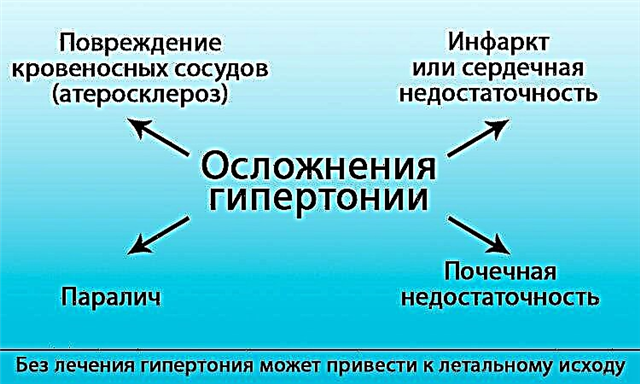Analysis of heart rate variability is a complex indicator that allows you to assess the functional relationship between the cardiovascular and neurohumoral systems. First of all, the technique is used to assess the functional capabilities of healthy people. The HRV study is widely used for examining athletes and astronauts. Nevertheless, this method has shown itself well in the early diagnosis of functional disorders of the cardiovascular system. Other advantages of this tool are its simplicity (as opposed to Holter ECG) and low cost.
Why rhythm variability appears and what it is
In simple words, heart rate variability is changes in the intervals between systoles, which appear due to the influence of external and internal factors. This indicator is measured by studying the duration of the periods of heart contractions over a certain period of time. Typically, electrocardiographic data are used for this, namely the distance between the R waves (i.e., the highest peaks on the ECG).
In addition to measuring the R-R intervals, the N-N study is also used - the intervals between normal contractions. This is especially important if the patient has arrhythmias.
It is known that man is an open system. T. any changes in the external or internal environment are reflected in the functioning of organs and cells. This is the basis of variability - the variability of vital signs under the influence of certain factors.
In this regard, the heart is a very sensitive organ. Its work depends very much on the general condition of a person, in particular on the nervous and endocrine systems.
By detecting changes in the functioning of the body, the nervous system regulates the activity of the heart accordingly. The sympathetic section increases the heart rate, increases the strength of myocardial contractions. In turn, the vagus nerve acts in the opposite way - it reduces the mentioned indicators.
The respiratory system also has a certain influence. So, during inhalation, parasympathetic is inhibited and tachycardia occurs. On the contrary, when you exhale, the tone of the sympathetic part of the central nervous system decreases. This phenomenon is the basis of respiratory arrhythmias.
Thus, the analysis of HRV makes it possible to identify changes in cardiac activity and, consequently, disturbances in the work of regulatory systems.
Diagnostic methods
Despite the simplicity of the technique, it is usually used in a hospital setting. This is due to the fact that you need strict control over the load on the body. Only in this case it is possible to draw accurate conclusions about the state of the heart and its response to various stimuli.
There are several ways to diagnose variability.
Depending on the duration of registration:
- short-term - up to 5 minutes (used for mass or outpatient examinations);
- medium duration - up to 2 hours (with functional tests);
- hours and daily records (used during operations and in intensive care units).
Most often, five-minute recordings are used.
Depending on the goals, there are:
- parallel studies (as a means of medical control, for example, during an operation);
- specialized (used to examine the whole body in functional diagnostics).
As for the methods of analysis proper, there is also a considerable arsenal here.
- Statistical methods are direct measurements of the R-R and N-N gaps, then determining values such as the standard deviation of the intervals or the coefficient of variation.
- Geometric methods (variation heart rate monitoring) consist in calculating the probabilistic characteristics of the data obtained and constructing graphical histograms.
- Correlation rhythmography is a graphical display of a sequence of cardiointervals. In this case, loss or, conversely, additional contractions of the heart become clearly visible.
- Spectral methods allow you to determine the different frequency indicators of the heart rate. This makes it possible to study the impact of regulatory bodies. However, it should be remembered that the presence of arrhythmias can significantly distort the results of this analysis.
Further tactics of action
It is important to remember that the values of heart rate variability depend not only on the state of health, but also on many other factors:
- gender (usually higher in women);
- age (in older people, some parameters of the cardiac conduction system are reduced);
- weight (obesity contributes to a decrease in variability);
- playing sports (a trained person has large reserves of variability);
- emotional state (worsens performance).
Also, HRV is negatively affected by sleep disturbances, eating disorders, taking certain medications and a polluted environment. In general, everything that disrupts the functioning of the body, especially its regulatory systems.
Rhythm variability is sharply reduced in some acute pathologies:
- ischemic heart disease (including myocardial infarction);
- arterial hypertension;
- acute disorders of cerebral circulation (strokes);
- Parkinson's disease.
To a lesser extent, the indicator decreases in chronic diseases:
- overtraining syndrome;
- chronic heart failure in the initial degree;
- multiple sclerosis;
- orthostatic hypertension;
- metabolic cardiomyopathies (with diabetes mellitus, infectious and autoimmune diseases);
- adjustment disorder.
The use of this technique in relation to the fetus and newborns to assess the risk of sudden death syndrome may be promising.
Conclusions
The study of heart rate variability is a simple and reliable way to study the state of the most important organ systems.
The low cost of the technique allows it to be used for mass screening examinations in order to identify latent pathologies in the early stages. Widespread use in sports and astronautics emphasizes the preventive nature of this drug, which corresponds to modern trends in medicine.
If you have found a violation of this indicator, this does not mean the need for treatment. Try simple remedies like sports and recreation. However, heart rate variability can be dramatically reduced in some acute pathologies, such as myocardial infarction or stroke.



